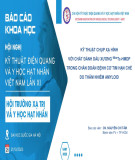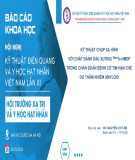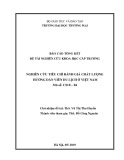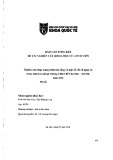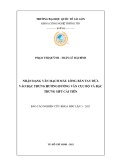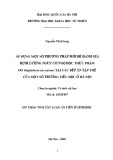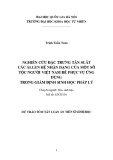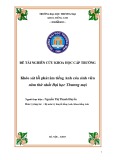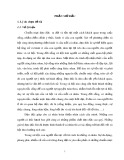
401
Available online http://ccforum.com/content/8/6/401
Critical Care is introducing a new section to the website
(www.ccforum.com) – the evidence-based medicine journal
club. The aim of this section is to help individuals to evaluate
critically the current literature and assess the likelihood of it
changing clinical practice.
A journal club is a group of individuals who meet regularly to
evaluate critically the clinical application of recent articles in
the medical literature. As an entity, journal clubs have a long
history in postgraduate medical education, which is well
documented by Linzer [1]. The earliest reference to a journal
club is found in a book of memoirs and letters by the late Sir
James Paget [2], a British surgeon and one of the founders
of modern pathology. He describes a group at St.
Bartholomew’s Hospital in London in the mid-1800s with ‘a
kind of club … a small room over a baker’s shop near the
Hospital-gate where we could sit and read the journals.’ It is
believed that Sir William Osler established the first formal
journal club at McGill University in Montreal in 1875, though
Osler himself might have been aware of similar gatherings
that were taking place elsewhere [3]. The purpose of Osler’s
early journal club was ‘for the purchase and distribution of
periodicals to which he could ill afford to subscribe’. Over the
ensuing one and a half centuries, journal clubs have taken a
variety of forms that have evolved to meet the needs of the
participants. Three goals, however, have persisted over the
years: to keep up with current literature, to impact clinical
practice, and to teach critical reading skills [1].
Evidence-based medicine is ‘… the conscientious, explicit,
and judicious use of current best evidence in making
decisions about the care of individual patients.’ [4]. The term
‘evidence-based medicine’ was coined at McMaster Medical
School in Canada in the 1980s [5]. Some important
concepts regarding the implementation of evidence-based
medicine were presented in a classic series – entitled Users’
Guides to the Medical Literature – that appeared in the
Journal of the American Medical Association from 1993 to
2000 [6]. When using the principles of evidence-based
medicine to evaluate an article critically, we seek to answer
two questions [7]. First, are the results of the study valid?
Second, are the results clinically useful? Many young trainees
are frustrated with their early journal club experiences
because too often the more senior faculty focus on the
minutiae that make the answer to the first question ‘maybe’ or
‘no’, without giving a satisfactory answer to the second
question.
The Department of Critical Care Medicine in the University of
Pittsburgh School of Medicine was the first academic
department of critical care medicine in the USA, and it has
established an international reputation for excellence in
clinical care, education, and research. With its
Multidisciplinary Critical Care Training Program, the
Department has trained more than 550 fellows in critical
care, including many of the most distinguished clinicians and
researchers in the field of critical care medicine worldwide.
Each month the Department convenes a multidisciplinary
evidence-based journal club. With the guidance of a faculty
mentor, fellows in the University of Pittsburgh Critical Care
Training Program lead the discussion of an article, which is
chosen based on the following criteria: the article must have
been published within the past 2 years and not previously
discussed in the journal club; the study must contain no
major flaws of methodology; and the results of the study, if
valid, must impact clinical practice in some way.
After the fellow’s presentation, the article is open for debate.
As is the case in many journal clubs, things sometimes get
bogged down in minutiae. However, the overall tone is one of
truly trying to understand the implications of the study. A
point is made always to answer the second question, which
has been rephrased to read as follows: ‘Based on the results
of this study, should we change clinical practice?’ Afterward,
the fellow and faculty mentor prepare a written record of the
proceedings in the form of an expanded abstract with a three
to four paragraph commentary. These proceedings,
Editorial
Evidence-based medicine journal club
Eric B Milbrandt1and Jean-Louis Vincent2
1Assistant Professor, Department of Critical Care Medicine, University of Pittsburgh School of Medicine, Pittsburgh, Philadelphia, USA
2Head of Department of Intensive Care, Erasme Hospital (Free University of Brussels), Brussels, Belgium
Corresponding author: Eric B Milbrandt, milbeb@ccm.upmc.edu
Published online: 3 November 2004 Critical Care 2004, 8:401-402 (DOI 10.1186/cc3005)
This article is online at http://ccforum.com/content/8/6/401
© 2004 BioMed Central Ltd



